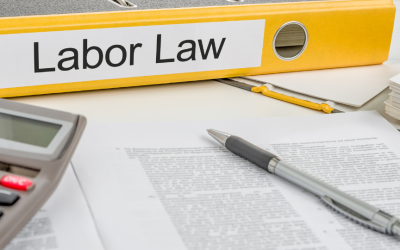Introduction
HR reporting is the backbone of organizational accountability. It provides insights into employee performance, hiring practices, diversity initiatives, payroll data, and more. But what happens when HR reporting fails compliance checks? Whether due to human error, outdated systems, or misinterpretation of regulatory requirements, non-compliant reports can lead to fines, reputational damage, and internal chaos.
You’re not alone if your company has faced compliance issues related to HR reporting. Many organizations, even well-established ones, struggle with aligning their HR practices with evolving labor laws and international standards. In this blog, we’ll break down why HR reporting failures happen, how to detect and correct them, and how services like 1EOR can help you build a compliant, future-ready HR system.
What You Should Understand Before Addressing HR Reporting Failures
Before diving into remediation steps, it’s essential to understand the structural and operational issues that often lead to non-compliance in HR reporting. The goal isn’t just to fix errors—it’s to prevent them from recurring.
Common Compliance Standards in HR Reporting
HR compliance encompasses regulations like the Fair Labor Standards Act (FLSA), Equal Employment Opportunity (EEO) mandates, GDPR for international employees, and local labor laws. These laws establish the foundation for fair treatment, transparency, and equitable workplace practices.
Failing to align with these standards can result in serious consequences, including lawsuits and government audits. Knowing which standards apply to your organization is the first step in achieving and maintaining compliance. Companies operating across multiple jurisdictions must also be aware of regional variations in labor laws.
Types of Reporting Failures
Errors in data entry, missed deadlines, misfiled records, or incorrect classification of employees are some of the most common reporting failures. These issues often arise due to miscommunication between departments or outdated reporting practices.
Manual reporting processes are especially prone to errors. Even small mistakes in time-tracking or payroll documentation can trigger compliance issues. Additionally, misaligned data between payroll systems and HR management software is a frequent source of discrepancy.
The Role of Technology in Compliance
Using outdated or non-integrated HR software often leads to disjointed and inaccurate reports. Real-time data and integrated platforms are critical for maintaining accuracy and visibility. Technology enables consistent report formatting, instant data synchronization, and policy enforcement.
Modern HR systems offer dashboards, automated alerts, and regulatory updates to help teams stay informed and in control. Failing to upgrade can leave companies vulnerable to non-compliance. Adopting cloud-based solutions also helps with audit preparedness and data backups.
Risks Associated with Non-Compliance
Besides regulatory fines, failed HR reporting can impact employee trust, brand reputation, and operational continuity. In some industries, it may even lead to license revocation or disqualification from government contracts.
An audit trail is often required to demonstrate that an organization has taken steps to fix prior errors. Without clear documentation, defending against compliance allegations becomes difficult. The reputational damage alone can hurt recruitment and retention efforts.
Importance of Proactive HR Strategy
Waiting for compliance issues to surface can be a costly mistake. A proactive HR strategy includes periodic internal audits, continuous training, and standardized processes. These proactive steps serve as early warning systems and empower HR teams to act before violations occur.
Compliance isn’t a one-time activity. It needs to be embedded into your HR workflows and reinforced through technology, training, and leadership commitment. A culture of compliance must be promoted from the top down.
Steps to Take When HR Reporting Fails Compliance
Discovering a compliance failure can be daunting, but knowing what to do next is crucial for mitigating risk and restoring confidence.
Conduct an Immediate Internal Audit
Start by identifying the scope of the issue. Review all related reports, employee records, and correspondence to understand how widespread the failure is. Consider interviewing relevant team members to uncover the root causes.
Use this audit to spot patterns—are the same errors recurring? Do they stem from one department or process? This insight will shape your corrective plan. Document every step to build a reliable audit trail.
Notify Stakeholders and Legal Counsel
Transparency is key. Alert relevant departments—legal, finance, executive leadership—and consult with legal experts on next steps. In some cases, voluntary disclosure to regulatory authorities can reduce potential penalties.
They’ll help assess the severity of the violation and draft communication strategies, especially if external reporting or remediation is required. A legal team can also help guide the tone and timing of any internal announcements.
Correct and Refile Reports
Once errors are confirmed, refile the correct reports with the appropriate regulatory agencies. Include notes or letters of explanation if needed. This shows good faith effort and willingness to cooperate.
Make sure the corrections meet all formatting and submission standards. Digital platforms can speed this up and reduce future risks. Consider double-verifying the amended data before final submission.
Review and Update Internal Processes
After correcting the reports, review the internal processes that led to the issue. Was there a lack of oversight? Did automation fail? Were compliance rules misunderstood or ignored?
Update documentation, retrain staff, and introduce checks and balances. Implement periodic process reviews as a preventive measure. Maintain a compliance calendar for timely reporting and audits.
Invest in Reliable HR Tech Solutions
Modern HR software like what’s offered by 1EOR can help streamline compliance. Features like real-time dashboards, automated alerts, and built-in regulatory tracking keep your data in check.
These platforms also allow for better data visualization and integration with payroll, benefits, and employee onboarding systems—all critical for audit-proof reporting. Built-in workflows and role-based access controls add further safeguards.
Conduct Compliance Training for HR Staff
Training plays a critical role in ensuring that HR professionals are up-to-date with the latest regulatory changes. Regular workshops, e-learning modules, and knowledge assessments can reinforce best practices.
It’s important to cover not only legal obligations but also internal policies and ethical considerations. Well-informed staff are your first line of defense against compliance breaches.
Establish a Compliance Task Force
Larger organizations benefit from having a dedicated compliance task force. This team can be responsible for monitoring regulatory updates, coordinating audits, and maintaining relationships with legal advisors.
A cross-functional task force ensures that compliance is integrated into every department and that no single point of failure jeopardizes the organization’s standing.
Monitor Global Trends and Regulatory Changes
Staying informed on global HR compliance trends is essential, especially for organizations with an international presence. Emerging labor laws, digital privacy regulations, and employee rights updates can significantly impact your reporting responsibilities.
Subscribe to industry publications, attend HR compliance webinars, and collaborate with global partners to ensure your processes stay aligned with the latest requirements. Proactive monitoring of global regulatory landscapes minimizes the risk of accidental violations.
Why 1EOR is Your Partner in Compliance
1EOR provides end-to-end HR solutions designed with compliance at the core. Their systems are built to handle global labor regulations, automate documentation, and ensure error-free reporting. Whether you’re operating in one country or across multiple regions, their platform adapts to meet local requirements.
Whether you’re expanding internationally or looking to improve your current HR workflow, 1EOR offers customized, scalable tools to keep your team compliant and efficient. With a strong emphasis on technology, accuracy, and regulatory alignment, they help organizations eliminate guesswork from HR reporting.
Their expert support team is always ready to help you navigate tricky legal landscapes and optimize your internal processes. Choosing 1EOR means putting compliance on autopilot, without compromising flexibility or functionality.
Visit 1EOR today and learn how they can support your compliance journey from day one.
Conclusion
Compliance in HR reporting is not just about avoiding penalties—it’s about protecting your workforce, building trust, and creating an ethical business culture. If your organization has faced setbacks in HR compliance, use that as a turning point to build stronger systems, retrain teams, and invest in tools that offer accuracy and peace of mind.
As global regulations continue to evolve, staying compliant is an ongoing journey. Equip your team with the right knowledge, technology, and partnerships to meet compliance head-on. With partners like 1EOR, you don’t have to navigate these challenges alone.
Their expert-driven approach and robust technology give you everything you need to stay ahead of compliance issues—today and in the future. Don’t wait for the next audit to fix what’s broken. Be proactive, be compliant, and be confident.
FAQs
- What are the most common HR reporting compliance failures?
Errors in payroll, misclassification of workers, and data security issues top the list. - How do I know if our HR reports are non-compliant?
Internal audits, external assessments, and legal consultations can help you evaluate compliance status. - Can HR software fix compliance issues automatically?
It helps significantly but must be properly set up and regularly updated to be effective. - What regulations should global companies be aware of?
GDPR, FLSA, EEO guidelines, and local labor laws are essential. - How can 1EOR help with international compliance?
They offer globally integrated solutions that automate local regulatory requirements. - What’s the first thing to do after a compliance failure?
Conduct an internal audit and notify your legal and HR teams immediately. - How often should HR audits be conducted?
At least quarterly or whenever major HR system changes occur. - Can non-compliance affect employee trust?
Yes, repeated issues can impact morale, trust, and even retention. - What’s the role of training in preventing compliance failures?
Regular training ensures that staff understand current laws and internal procedures. - Why choose 1EOR over other HR platforms?
1EOR combines global expertise, reliable tech, and regulatory focus to deliver unmatched HR compliance solutions.


